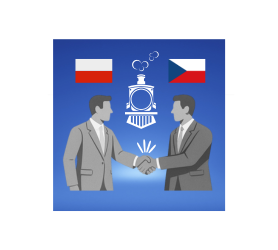OLTIS Group: Digital freight transport management now with support of Polish infrastructure

OLTIS Group expands digital rail freight management by incorporating Polish infrastructure
At the international transport and logistics fair transport logistic 2025 in Munich, OLTIS Group has concluded a new agreement on cooperation and deployment of its control system with a major rail freight carrier operating in both Poland and the Czech Republic. The subject of the agreement is implementation of the modern OLTIS Group control system, which will significantly streamline the carrier’s daily operations and bring more effective planning, faster processing of transport requests, and optimized use of available capacities.
The main ambition of this collaboration is to increase interoperability – the ability of national transport systems to communicate seamlessly with each other and share data in real time. This is the key to faster, more accurate, and more sustainable logistics across Europe.
One of the concrete steps is the linking data flows from the Polish infrastructure to a single European data set structure, which is in line with the legislative framework of the European Union and the technical requirements of TAF TSI (Telematics Applications for Freight Transport). Digitalization of these processes will allow not only for faster response to customer requests, but also better use of available train capacities and reduction in transport times .
“For our customers, this means more than just new technology,” says Roman Špaček, Sales Director of the Rail Freight Division of OLTIS Group. “It means less administration, fewer errors, shorter processing times, and better planning. Our goal is to support and create a single European rail communication space.”
For OLTIS Group, this is another significant step in its mission to connect European rail infrastructures and unify data communication between individual players in the rail freight market. In doing so, the company cements its role as a technology leader and a partner that carriers and infrastructure managers can rely on when it comes to fulfilling the goals of Europe’s digital transformation.